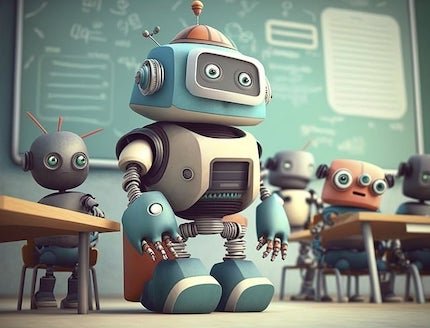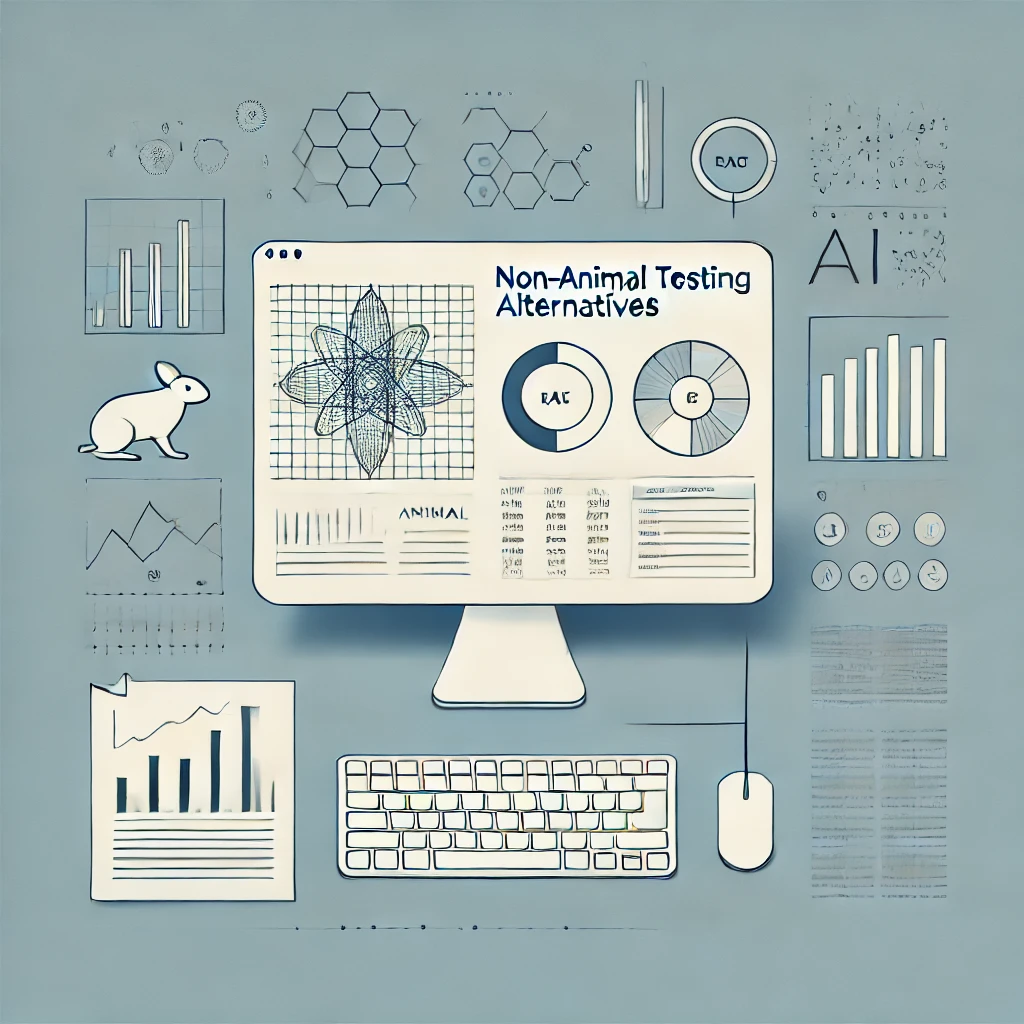Amazon is testing out robots in its warehouses in the US. The robots, called Digit, have arms and legs and can move around and pick up things like humans. Amazon says that this will help its workers focus on giving good service to customers. But some people are worried that this will mean job losses for humans. Amazon says that its robots have actually created lots of new jobs within the company.
Amazon already has over 750,000 robots working alongside humans in its warehouses. These robots do repetitive tasks and have helped to create 700 new skilled jobs. The head of Amazon Robotics, Tye Brady, says that humans are still really important in the process and that fully-automated warehouses won’t happen.
The new robot, Digit, can walk on two legs and pick up packages and orders. It can even go up and down stairs. The main focus of the trial is to make sure that the robot can work safely with humans. Amazon has been using more robots to save money. It has also introduced wheeled robots and drones for delivery. Despite worries about jobs, Amazon says that these new technologies actually create jobs and help the company grow.
Original news source: Amazon trials humanoid robots to ‘free up’ staff (BBC)
Listen
Slow
Normal
Fast
Group or Classroom Activities
Warm-up Activities:
– Charades
Instructions: Divide the class into two teams. Write down a list of words related to the article on separate pieces of paper and put them in a hat. One student from each team will come to the front and pick a word from the hat without looking. They must then act out the word without speaking, while their team tries to guess what it is. The team that guesses correctly gets a point. Repeat with new students until all the words have been acted out.
– News Summary
Instructions: In pairs, students will take turns summarizing the main points of the article to their partner. They should try to include all the important details in a concise and clear way. After each summary, the partner can ask questions or request clarification. Then, they will switch roles and the other student will summarize the article.
– Opinion Poll
Instructions: Divide the class into small groups. Each group will discuss the following question: “Do you think robots in warehouses will lead to job losses for humans?” After discussing their opinions, each group will appoint a spokesperson to present their group’s opinion to the class. The spokesperson should summarize the main points discussed and explain the reasons behind their group’s opinion.
– Vocabulary Pictionary
Instructions: Divide the class into pairs. Give each pair a list of vocabulary words from the article. One student will choose a word and draw a picture to represent it, while the other student tries to guess the word. The students should take turns drawing and guessing, using as much English as possible to describe the word or ask questions. The pair with the most correct guesses wins.
– Future Predictions
Instructions: In small groups, students will discuss and make predictions about the future of robotics in warehouses. They should consider the potential impact on jobs, the development of new technologies, and any other relevant factors. Each group will then present their predictions to the class, explaining their reasoning and supporting their ideas with evidence from the article or their own knowledge. The class can engage in a discussion to compare and debate different predictions.
Comprehension Questions:
1. What are the robots in Amazon’s warehouses called?
2. Why does Amazon think using robots will benefit its workers?
3. What are some concerns that people have about using robots in warehouses?
4. How many robots does Amazon currently have working in its warehouses?
5. What tasks do the current robots in Amazon’s warehouses perform?
6. According to the head of Amazon Robotics, are humans still important in the process?
7. What is the main focus of the trial with the new robot, Digit?
8. Despite concerns about job losses, what does Amazon say about the impact of using robots and new technologies?
Go to answers ⇩
Listen and Fill in the Gaps:
(1)______ is testing out (2)______ in its warehouses in the US. The robots, called (3)______, have arms and legs and can move around and pick up things like humans. Amazon says that this will help its (4)______ focus on giving good service to customers. But some people are worried that this will mean job (5)______ for (6)______. Amazon says that its robots have actually created lots of new jobs within the company.
Amazon already has over 750,000 robots working alongside humans in its (7)______. These robots do repetitive tasks and have helped to create 700 new (8)______ jobs. The head of Amazon Robotics, Tye (9)______, says that humans are still really (10)______ in the process and that fully-automated warehouses won’t (11)______.
The new robot, Digit, can walk on two legs and pick up packages and orders. It can even go up and down (12)______. The main focus of the trial is to make sure that the (13)______ can work safely with humans. Amazon has been using more robots to save money. It has also (14)______ wheeled robots and drones for (15)______. Despite worries about jobs, Amazon says that these new technologies actually (16)______ jobs and help the company grow.
Go to answers ⇩
Discussion Questions:
Students can ask a partner these questions, or discuss them as a group.
1. What do you think about robots working in warehouses?
2. How would you feel if your job was replaced by a robot?
3. Do you think robots will eventually take over all human jobs? Why or why not?
4. What is the main advantage of using robots in warehouses?
5. How do you think robots can help companies grow?
6. Do you like the idea of using robots for delivery? Why or why not?
7. What is a fully-automated warehouse?
8. How do you think robots can work safely with humans?
9. Why do you think Amazon is using more robots to save money?
10. How do you think robots have created new jobs within Amazon?
11. Have you ever seen a robot in real life? What was your experience like?
12. Do you think robots can replace humans in providing good customer service? Why or why not?
13. How do you think robots can improve efficiency in warehouses?
14. What other tasks do you think robots can do in warehouses?
15. Why do you think some people are worried about job losses due to robots?
Individual Activities
Vocabulary Meanings:
Match each word to its meaning.
Words:
1. robots
2. Digit
3. warehouses
4. humans
5. jobs
6. repetitive
7. delivery
8. technologies
Meanings:
(a) New and advanced methods or tools used in a specific field
(b) Buildings where goods are stored
(c) The name of a specific robot
(d) Machines that can do tasks automatically
(e) Tasks that are done over and over again
(f) The act of bringing goods to someone’s house
(g) Work or employment
(h) People
Go to answers ⇩
Multiple Choice Questions:
1. What is the name of the robots that Amazon is testing in its warehouses?
(a) Robotron
(b) Automate
(c) Mechano
(d) Digit
2. Why does Amazon say it is testing these robots?
(a) To replace human workers
(b) To save money on wages
(c) To increase efficiency in the warehouses
(d) To help workers focus on customer service
3. How many robots does Amazon currently have working in its warehouses?
(a) 500,000
(b) 1 million
(c) Over 750,000
(d) 100,000
4. What kind of jobs have the robots helped to create within Amazon?
(a) 700 new skilled jobs
(b) 1,000 new entry-level jobs
(c) 500 new management positions
(d) No new jobs have been created
5. According to the head of Amazon Robotics, what is the role of humans in the warehouse process?
(a) Humans are no longer needed
(b) Humans are still really important
(c) Humans are only needed for manual labor
(d) Humans are only needed for customer service
6. What can the new robot, Digit, do?
(a) Walk on two legs and pick up packages
(b) Fly and deliver packages
(c) Swim and retrieve items from underwater
(d) Drive and transport goods
7. What is the main focus of the trial with the robot, Digit?
(a) To increase efficiency in the warehouses
(b) To replace human workers
(c) To ensure it can work safely with humans
(d) To reduce costs for Amazon
8. According to Amazon, how do these new technologies, including robots, impact job creation?
(a) They lead to job losses and downsizing
(b) They actually create jobs and help the company grow
(c) They have no impact on job creation
(d) They only create low-skilled jobs
Go to answers ⇩
True or False Questions:
1. Amazon claims that its robots have actually resulted in the elimination of many new jobs within the company.
2. The robots, called Digit, have wheels and can move around and pick up things like humans.
3. The head of Amazon Robotics, Tye Brady, believes that humans are still crucial in the process and fully-automated warehouses won’t be implemented.
4. Currently, Amazon has less than 750,000 robots working alongside humans in its warehouses.
5. Amazon is testing out robots in its warehouses in the US.
6. Some people are concerned that the use of robots will lead to job losses for humans.
7. These robots perform unique tasks and have contributed to the elimination of 700 new skilled jobs.
8. Amazon believes that using robots will allow its workers to focus on providing good customer service.
Go to answers ⇩
Write a Summary:
Write a summary of this news article in two sentences.
Check your writing now with the best free AI for English writing!
Writing Questions:
Answer the following questions. Write as much as you can for each answer.
Check your answers with our free English writing assistant!
1. What are the robots called that Amazon is testing in its warehouses?
2. Why does Amazon think using robots will be beneficial for its workers?
3. What are some concerns people have about using robots in warehouses?
4. How many robots are currently working in Amazon’s warehouses?
5. What is the main focus of the trial with the new robot, Digit?
Answers
Comprehension Question Answers:
1. What are the robots in Amazon’s warehouses called?
The robots in Amazon’s warehouses are called Digit.
2. Why does Amazon think using robots will benefit its workers?
Amazon thinks using robots will benefit its workers because it will allow them to focus on providing good service to customers.
3. What are some concerns that people have about using robots in warehouses?
Some concerns that people have about using robots in warehouses are job losses for humans.
4. How many robots does Amazon currently have working in its warehouses?
Amazon currently has over 750,000 robots working in its warehouses.
5. What tasks do the current robots in Amazon’s warehouses perform?
The current robots in Amazon’s warehouses perform repetitive tasks.
6. According to the head of Amazon Robotics, are humans still important in the process?
According to the head of Amazon Robotics, humans are still really important in the process.
7. What is the main focus of the trial with the new robot, Digit?
The main focus of the trial with the new robot, Digit, is to ensure that it can work safely with humans.
8. Despite concerns about job losses, what does Amazon say about the impact of using robots and new technologies?
Despite concerns about job losses, Amazon says that using robots and new technologies actually create jobs and help the company grow.
Go back to questions ⇧
Listen and Fill in the Gaps Answers:
(1) Amazon
(2) robots
(3) Digit
(4) workers
(5) losses
(6) humans
(7) warehouses
(8) skilled
(9) Brady
(10) important
(11) happen
(12) stairs
(13) robot
(14) introduced
(15) delivery
(16) create
Go back to questions ⇧
Vocabulary Meanings Answers:
1. robots
Answer: (d) Machines that can do tasks automatically
2. Digit
Answer: (c) The name of a specific robot
3. warehouses
Answer: (b) Buildings where goods are stored
4. humans
Answer: (h) People
5. jobs
Answer: (g) Work or employment
6. repetitive
Answer: (e) Tasks that are done over and over again
7. delivery
Answer: (f) The act of bringing goods to someone’s house
8. technologies
Answer: (a) New and advanced methods or tools used in a specific field
Go back to questions ⇧
Multiple Choice Answers:
1. What is the name of the robots that Amazon is testing in its warehouses?
Answer: (d) Digit
2. Why does Amazon say it is testing these robots?
Answer: (d) To help workers focus on customer service
3. How many robots does Amazon currently have working in its warehouses?
Answer: (c) Over 750,000
4. What kind of jobs have the robots helped to create within Amazon?
Answer: (a) 700 new skilled jobs
5. According to the head of Amazon Robotics, what is the role of humans in the warehouse process?
Answer: (b) Humans are still really important
6. What can the new robot, Digit, do?
Answer: (a) Walk on two legs and pick up packages
7. What is the main focus of the trial with the robot, Digit?
Answer: (c) To ensure it can work safely with humans
8. According to Amazon, how do these new technologies, including robots, impact job creation?
Answer: (b) They actually create jobs and help the company grow
Go back to questions ⇧
True or False Answers:
1. Amazon claims that its robots have actually resulted in the elimination of many new jobs within the company. (Answer: False)
2. The robots, called Digit, have wheels and can move around and pick up things like humans. (Answer: False)
3. The head of Amazon Robotics, Tye Brady, believes that humans are still crucial in the process and fully-automated warehouses won’t be implemented. (Answer: True)
4. Currently, Amazon has less than 750,000 robots working alongside humans in its warehouses. (Answer: False)
5. Amazon is testing out robots in its warehouses in the US. (Answer: True)
6. Some people are concerned that the use of robots will lead to job losses for humans. (Answer: True)
7. These robots perform unique tasks and have contributed to the elimination of 700 new skilled jobs. (Answer: False)
8. Amazon believes that using robots will allow its workers to focus on providing good customer service. (Answer: True)
Go back to questions ⇧













